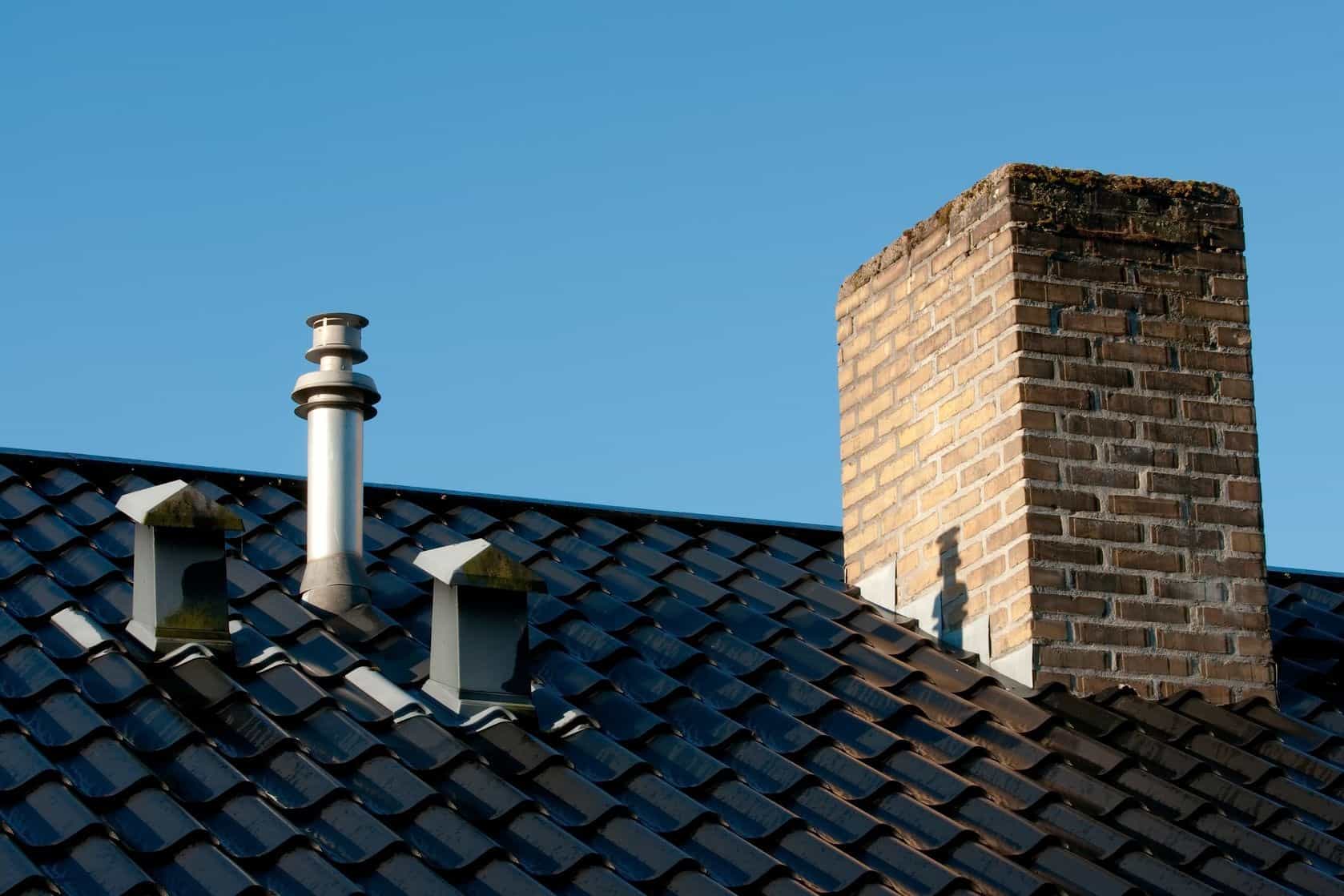Are you on the lookout for related information on Essential Plumbing Vent Pipes: Understanding Their Role?

Correct ventilation in pipes systems is commonly neglected, yet it is crucial for preserving the capability and safety of your home's pipes. Ventilation assists manage air pressure, stop the accumulation of hazardous gases, and make sure the effective elimination of waste. In this guide, we will discover the importance of appropriate plumbing air flow, how it functions, and the benefits it gives your pipes system.
Understanding Ventilation in Plumbing
Air flow in pipes describes the network of pipelines that enable air to stream with the drain system. These vents serve multiple purposes, consisting of managing atmospheric pressure within the pipelines, stopping drain gases from entering the home, and assisting in the smooth circulation of wastewater.
How Air Flow Works in Plumbing Equipments
Air Pressure Regulation
Appropriate ventilation maintains well balanced air pressure within the pipes system. When water streams via pipelines, it displaces air. Without adequate air flow, this displacement can produce adverse stress, bring about slow drains pipes or siphoning of water from traps, which can trigger undesirable odors to leak into the home.
Protecting Against Drain Gas Accumulation
One of one of the most important functions of plumbing vents is to avoid sewage system gases, such as methane and hydrogen sulfide, from accumulating within the home. These gases can position severe wellness dangers and are highly flammable. Vent pipelines enable these gases to get away securely outdoors.
Helping in Waste Removal
Ventilation assists in the efficient removal of wastewater by preventing airlocks in the water drainage system. When air can move easily with the vents, it allows water and waste to flow smoothly via the pipelines, minimizing the danger of clogs and back-ups.
Kinds Of Plumbing Vents
Key Stack Vent
The major stack air vent, likewise known as the air vent stack, is the key vent in a pipes system. It extends from the major drain align via the roofing, allowing gases to get away and fresh air to get in the system.
Branch Vent
Branch vents connect to the primary pile air vent and serve private components, such as sinks, commodes, and showers. These vents make sure that each fixture has adequate air flow to operate appropriately.
Air Admission Shutoff (AAV).
An Air Admission Valve (AAV) is a one-way valve that allows air to go into the plumbing system without the requirement for a traditional air vent pipe extending with the roofing system. AAVs are typically utilized in improvements or locations where installing a conventional vent is impractical.
Signs of Poor Air Flow in Pipes.
Slow Draining Fixtures.
If your sinks, tubs, or commodes are draining pipes slowly, maybe an indication of poor air flow. Inadequate air circulation can develop a vacuum effect, making it difficult for water to drain pipes appropriately.
Gurgling Seems.
Gurgling audios originating from drains are usually a result of air being drawn through water catches due to unfavorable stress in the pipes. This is a clear indication of insufficient ventilation.
Undesirable Odors.
Sewer smells inside your home are a warning that your pipes system is not properly ventilated. This could imply that sewer gases are not being adequately aired vent outside, resulting in possibly harmful conditions.
Common Ventilation Mistakes.
Insufficient Vent Sizing.
Utilizing undersized vent pipes can result in poor air flow and stress inequalities in the system. It's essential to use vents that fulfill the details needs of your pipes system.
Improper Vent Placement.
Placing vents also far from the fixtures they offer can decrease their effectiveness. Correct placement ensures that air can move freely and successfully with the system.
Disregarding Code Demands.
Building codes offer specific guidelines for pipes air flow. Ignoring these codes can lead to a system that fails to function properly and might cause expensive repairs or carcinogen.
Benefits of Proper Air Flow.
Enhanced System Effectiveness.
Properly aerated pipes systems operate extra efficiently, with less obstructions, faster draining, and much less strain on the pipelines. This efficiency prolongs the lifespan of the plumbing system.
Improved Air High Quality.
By preventing drain gases from entering your home, correct air flow contributes to much better interior air top quality, making your living setting healthier and more comfortable.
Avoiding Water Damage.
Sufficient ventilation assists stop water from being siphoned out of traps, which can result in drain gases going into the home and creating water damages over time.
Actions to Ensure Proper Air Flow.
Consulting Plumbing Codes.
Constantly speak with regional pipes codes when making or customizing your plumbing system. These codes give the needed guidelines for correct venting and guarantee your system meets safety and security standards.
Normal Evaluation and Upkeep.
Normal evaluations can assist determine prospective air flow problems before they end up being major problems. Maintenance tasks, such as cleaning air vent pipelines and looking for obstructions, are necessary for keeping the system in good working order.
Professional Installation.
For brand-new installments or major modifications, it's wise to work with an expert plumbing. They have the competence to make sure the air flow system is correctly designed and set up according to code.
Final thought.
Proper air flow is an essential element of any kind of plumbing system, making certain that it operates successfully and securely. By comprehending the importance of air flow, identifying the indications of poor air flow, and taking steps to maintain your system, you can protect against expensive concerns and secure your home's air quality.
4 Things You Should Know About Your Plumbing Vents
What Plumbing Vents Are
Also called a vent stack, a plumbing vent is a vertical pipe attached to your drain line that runs through your roof. The plumbing vent pipe, or plumbing air vent, removes gas and odors from your plumbing system and allows fresh air to enter the pipes, helping the water to flow out of the drain pipes.
What Plumbing Vents Do
Plumbing vents have two basic functions. One of which is to allow unpleasant smelling wastewater and sewer gasses to escape your plumbing system instead of entering your home. Plumbing vent pipes are typically located on roofs, away from windows, to ensure the fumes exit the home completely.
The other function of the plumbing vent is to move fresh air into your plumbing system. This helps move water through every plumbing fixture in your house, like toilets and sink drains. Think of the way in which you need to let a little air into the bottle as you pour soda in order to make the drink flow smoothly.
Different Types of Plumbing Vents
True vent: This is the most common vent option. In simplest terms, a true vent is a vertical pipe attached to your drain line that exits through the roof. They often function as the main vent that other fixtures can connect to. Re-vent pipe or auxiliary vent: Attached to the drain line near specific plumbing fixtures, re-vent pipes run up and over to connect to the main vent. Common vent: Two plumbing fixtures installed on opposite sides of a wall are typically tied into the vent stack using something known as a sanitary cross. Wet vent: This venting option operates as a drain pipe and a vent at the same time. Wet vent drainage systems drain water from one fixture while venting the air from another. Although they’ve been used for over 100 years, wet vent systems have only recently been added to the plumbing code in many areas. If you’re planning on installing one in a bathroom remodel, make sure you check your local code prior to construction. Loop vent: For free-standing fixtures like kitchen island sinks, loop vents are ideal. These vent pipes run under the floor, rise from the P-trap, and create a loop inside the cabinet sink. Air admittance valve: An AAV is a one-way mechanical valve typically installed at the site of the plumbing fixture. AAVs allow venting to occur without having to tie into a larger venting system. They’re ideal for venting fixtures where you aren’t able to easily connect to an existing vent system. Common Plumbing Vent Issues
Although vent pipes typically don’t have water flowing through them, they’re still subject to many typical plumbing issues. For example, clogs are one of the most common problems associated with sewer vent pipes. If your vent pipe gets clogged, all of your plumbing fixtures tied into the vent stack will be affected.
A sink with a slow drain that bubbles and gurgles or a strong sewage smell around your toilet are both indicators that your toilet vent pipe is clogged. Because most vent pipes exit through the roof, old leaves, twigs or even a bird’s nest could be clogging the pipe.
Clogs in your vent pipe system cause a buildup of negative pressure, meaning that water won’t be able to flow out of your home very well. It’s similar to putting your finger over the opening of a straw to trap water inside. When you remove your finger, the water is able to flow out of the straw.
If you suspect you have any blockage in your vent, make sure you have a professional come examine the situation. Left unchecked, a blocked air vent can lead to other costly repairs, like leaks and sediment buildup.
Under Pressure
Pipe vents are essential aspects of a home’s plumbing system. Owning a home means learning about all sorts of things you never put much thought into before. But by understanding as much as you can about the important systems of your home, you can keep those budgets intact and those anxiety levels low.
https://www.homeserve.com/en-us/blog/home-improvement/plumbing-vents/

Hopefully you enjoyed our piece about Why Plumbing Air Vents Are Important. Many thanks for taking a few minutes to read our blog post. Kindly pause to share this write-up if you enjoyed it. Thank you for your time spent reading it.
Schedule An Appointment